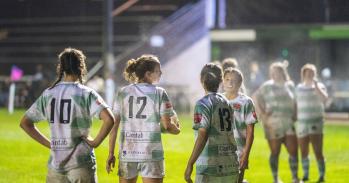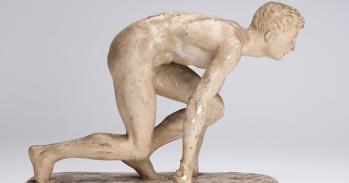Wordsworth used them for scribbling redrafts each time his poems were published, Da Vinci’s contained imagined conversations between the figures in his paintings, while Kafka wanted his to be burned after his death.
Wordsworth used them for scribbling redrafts each time his poems were published, Da Vinci’s contained imagined conversations between the figures in his paintings, while Kafka wanted his to be burned after his death.
Now, Cambridge University is paying homage to the humble notebook with an exhibition which lays bare the inner workings of some of Britain’s newest and brightest creative minds.
The Notebook Project, which opens on Wednesday (October 22nd) as part of the University’s Festival of Ideas, aims to offer a peek into the day-to-day lives of 21 emerging artists, each of whom was asked to keep a notebook for a month.
The contributors range from poets and sculptors to comedians and radio DJs, working in settings as varied as the television station E4, the New York offices of Vogue, a premiership football club, and the Antarctic.
The only instructions they received were to use the notebooks in a way that was “interesting, helpful, or inspiring to them” – and the results are predictably chaotic.
While some offer evidence of frantic brainstorming and hastily-scribbled snippets of overheard conversations on the Tube, another has the remains of a dead mouse stitched into its pages, while one artist cut hers up and made it into a bridge.
Ruth Abbott, a third year PhD student in the University’s Faculty of English who curated the exhibition at Cambridge’s Michaelhouse Centre, hopes that it will go some way towards demystifying art, particularly for the thousands of young people visiting the Festival.
“People often like to think of the artist as an inspired, unaware genius working separately from society in their own private space,” she said.
“For a 16 or 17-year-old, that can often make becoming a painter, writer or musician seem remote and even impossible. But most artists are inspired by their relationships with others and the things they get up to in the outside world. I hope that this exhibition will make them seem more like human beings.”
The inspiration for the project came from the notes of William Wordsworth, which form the subject of Abbott’s forthcoming thesis. For all his virtues as a pioneer of the Romantic Age, Wordsworth frequently drove publishers mad by redrafting his poems before each new edition. Alongside these edits, his notebooks contain shopping lists and jottings from his sister, rendering them both historical documents and art objects.
As the exhibition reveals, the note-taking habits of creative artists more than 150 years on are often more experimental, but some have already begun to acquire a similar historical value in their own right.
Ben Kelly, for instance, an illustrator and artist-in-residence at Manchester City Football Club, filled his book with a combination of photographs and sketches. Together, these provide a pictorial chronicle of the club’s turbulent life under former Thai premier Thaksin Shinawatra, the controversial sacking of Sven Goran-Eriksson, and the recent Abu Dhabi United takeover.
Some contributors produced notebooks that are almost as avant-garde as their finished work. Marianne Morris, a poet who enjoys taxidermy in her spare time, stitched in her entries to reflect the Ancient Greek metaphor of song as a woven tapestry, and added the pelt of a dead mouse for good measure.
Julia Crabtree, an installation artist who works at the Tate Modern, took a more practical approach to making the notebook useful by rolling up its pages and building them into a bridge; the model for a future project. When Abbott went to collect the book, she was given the bridge and the two unused covers.
Most books, however, show their creators balancing intense periods of creativity with routine matters of everyday life. Tom Rose, the prodigious 17-year-old winner of the 2008 BBC Proms Young Composer of the Year competition, filled his notebook not just with complex musical scores, but doodles, cartoons and notes about missing his girlfriend. Joe Thomas, co-author and performer in the E4 comedy series The Inbetweeners, interspersed his ideas for future episodes with untidily-scrawled notes from normal conversations apparently at random.
The exhibition will feature each of the books accompanied by information about the contributor, their career and their interests. A film about the project is also being put online.
“It’s about demystification, encouraging people to be creative, and showing them that there’s no right or wrong way of being an artist – it’s just something you do,” added Abbott. “There are endless examples of artists, composers and writers who changed their work again and again, and often you find their notebooks contain a wealth of creative material that nobody has really bothered to look at. It may not be something you would buy in a bookshop, but it’s just as valuable.”
The Notebook Project will be on display at the Michaelhouse Centre, Trinity Street, Cambridge, until November 2. The Centre is open every day from 9.30am to 5pm and entry is free. A film about the project, as well as full details about the University of Cambridge Festival of Ideas, can be found online by clicking the links to the right of this page.
This work is licensed under a Creative Commons Licence. If you use this content on your site please link back to this page.





